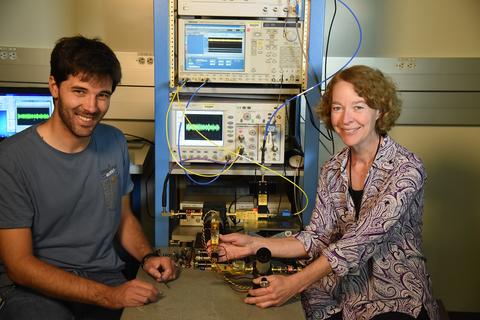Modulated-Signal Measurement and Traceability

The Metrology for Wireless Systems Group’s work in modulated-signal measurement and traceability is about developing measurement procedures and assisting in standards activities for calibrated measurements of modulated communication signals, with emphasis on microwave and millimeter-wave frequency bands. The key questions revolve around how real-world linear and nonlinear distortion affects the measurement accuracy of these signals so that users can separate the effects of distortion caused by the instrumentation from distortion caused by the device under test. This, in turn, is critical for understanding the reliability of common wireless metrics derived from measurement such as bit-error rate (BER), error vector magnitude (EVM) and average power.
To truly understand the impact of distortion from instrumentation on measurement and to enable industry-wide agreement between measured quantities, our work focuses on providing a full traceability path with uncertainties. We support new measurements and calibrations for current (4G) cellular wireless and other technologies, and we provide best-practice techniques and traceability for future 5G wireless systems.
Specifically, we are:
- Answering the wireless industry’s calls for ways to assess uncertainty in error vector magnitude (EVM) and other metrics at millimeter-wave frequencies. Our efforts here focus on extending the traceability path through vector sources, receivers, channel sounders and real-time oscilloscopes to 28 GHz, 60 GHz, 83 GHz, 94 GHz and beyond. We share our findings with industry through avenues such as IEEE’s new “Recommended practice for estimating the uncertainty in measurements of modulated signals for wireless communications with application to error vector magnitude and other system-level distortion metrics” working group, which we lead.
- Extending the traceability path for modulated signals from source to device-under-test (DUT) antenna in radiated measurements. This work includes measuring and modeling the effect of the off-axis alignment of multiple-input, multiple-output (MIMO) arrays on EVM. These studies emerged from a CTIA request related to 2x2 MIMO over-the-air (OTA) test methods, but they will also advance NIST’s ability to measure spatially diverse wireless systems, knowledge applicable to future massive MIMO development.

